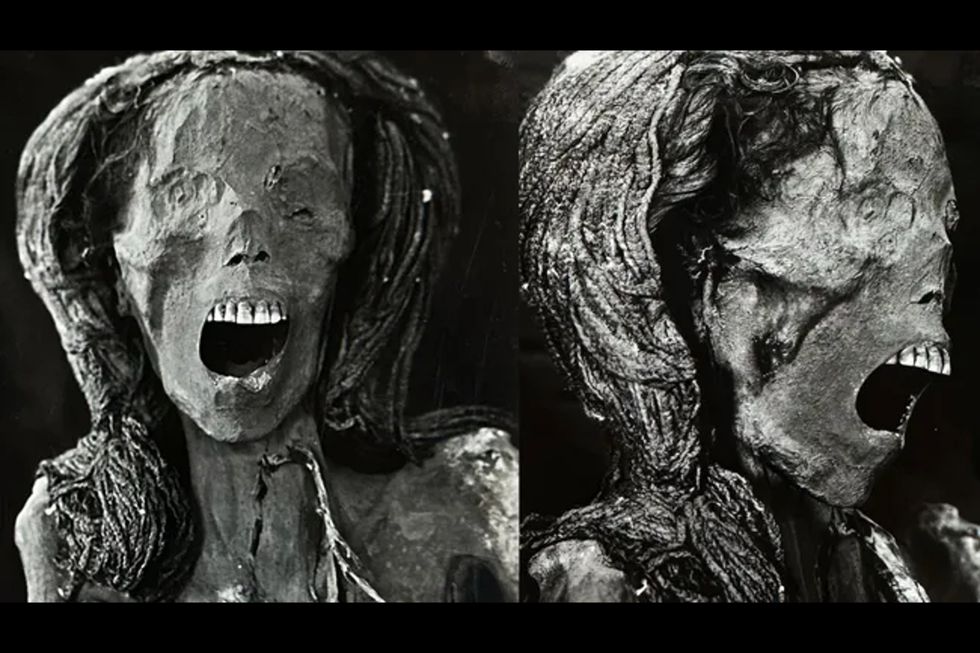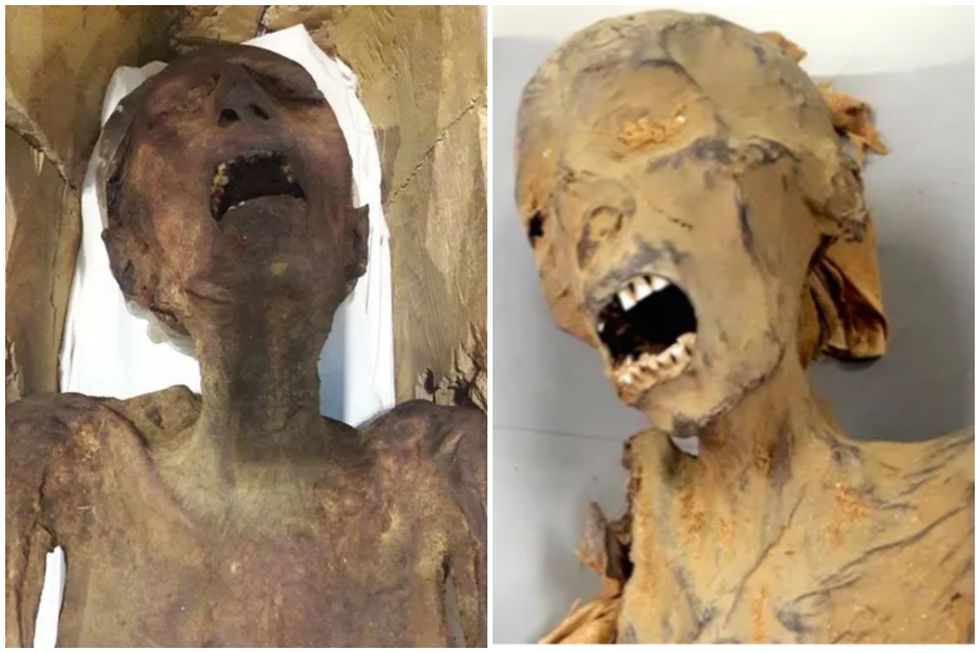Science & Tech
Harriet Brewis
Aug 05, 2024
Have You Ever Wondered What’s Going on Inside an Ancient Egyptian Mummy?
content.jwplatform.com
Almost a century after the discovery of a strange, “screaming”mummy,scientists have finally revealed what caused her disturbing expression.
The remarkably preserved human remains were unearthed at theEgyptiansite of Deir el-Bahari, near Luxor, in 1935.
They were discovered in a burial chamber near the tomb of Senenmut, a government official who was said to be the secret lover of Queen Hatshepsut – one of ancient Egypt’s greatest pharaohs.
The so-called “screaming woman” – named in honour of her gaping mouth – was found sporting a black wig and two scarab rings, according to a paper on the research published in the journalFrontiers in Medicine.
Tests revealed that the wig was made of date palm and contained a mix of quartz, magnetite and albite crystals, which were most likely used to stiffen the locks and give them a dark colour, the study’s co-author, Sahar Saleem, of Cairo University, toldLive Science.
However, the most remarkable things about the woman were not these embellishments but her alarming facial appearance and the lavish embalming methods used to preserve her.

Using infrared spectroscopy, Saleem and her colleague Samia El-Merghani, of the Egyptian Ministry of Tourism and Antiquities, discovered traces of juniper resin and frankincense on the corpse – luxurious products which would most likely have been imported into Egypt from the Eastern Mediterranean and East Africa or Southern Arabia.
These highly prized substances prevented the body from decay caused by bacteria and insects, asLive Sciencenotes.
And yet, the woman – who is believed to be some 3,500 years old – is not the only mummy to have been unearthed with a scream on its face.
Prince Pentawere (1173 to 1155 BC) and Princess Meritamun (1525 to 1504 BC) were also found with open mouths, Saleem noted.
"Opening of the mouth occurs when these muscles relax during sleeping or when they decompose after death," the mummy radiologist said. "In order to keep the deceased's mouth closed, embalmers frequently wrapped the mandible around the skull."
And yet, this woman’s case was different: her wide-mouthed pose was caused by a painful death.

"The mummy's screaming facial expression in this study could be read as a cadaveric spasm, implying that the woman died screaming from agony," Saleem said, explaining that such spasms occur when muscles contract just moments before death, causing them to stiffen. This condition can occur where death is caused by assault, suicide or drowning, she added.
Turning to the other two screaming mummies, Saleem pointed out that Pentawere died of suicide and Meritamun of a heart attack.
And yet, despite carrying out a detailed CT scan of the scan of the screaming woman, the experts weren’t able to deduce her precise cause of death.
Still, images from the scan did offer insight into the woman's height, age and medical conditions: revealing that she was about 5 feet tall and around 48 years old when she died.
The bones on her spine also suggested she may have had mild arthritis and she was missing several teeth. Unhealed teeth sockets suggest she lost these right before her death.
Saleem and her team hope that advances in scientific techniques will help them to establish further details about the mysterious woman.
"Her well-preserved body was like a time capsule that enabled us to know how she lived, the diseases she suffered from, and capture her death that could be in pain," Saleem said.
"This type of study humanises the mummy and let us look to her as a human being."
Sign upfor our free Indy100 weekly newsletter
How to jointhe indy100's free WhatsApp channel
Have your say in our news democracy. Click the upvote icon at the top of the page to help raise this article through the indy100 rankings
Top 100
The Conversation (0)
x














